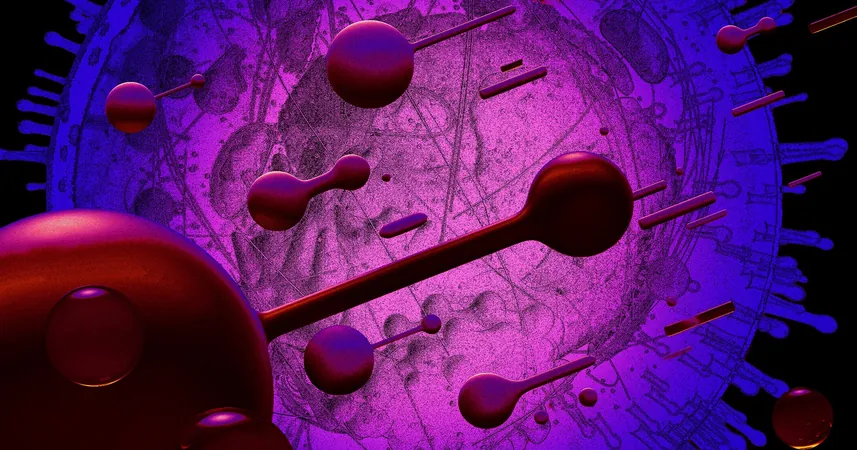
Breakthrough Discovery: Scientists Uncover Major Clue to the Origin of Life
2025-08-30
Author: Wai
A Puzzling Question Finally Getting Attention
How did life begin on Earth? This question has baffled scientists for ages, and now, researchers may have found a vital piece of the puzzle.
New Research Unveils RNA and Amino Acid Interaction
In an intriguing new study published in *Nature*, biologists revealed how RNA molecules and amino acids can randomly interact to form proteins, the hardworking molecules essential for almost every cell function.
Historically, proteins are produced in a cell’s ribosomes, utilizing instructions from RNA, leading to a classic chicken-and-egg dilemma: without proteins, cells can't exist, yet proteins are made within those very cells. This research sheds light on how proteins might have formed even before these biological factories came into existence.
Insight from Simple Chemistry in Water
Matthew Powner, a chemist from University College London and coauthor of the study, emphasized that their work demonstrated the initial steps in this complex process using basic chemistry in neutral pH water to link amino acids to RNA. He stated, "The chemistry is spontaneous and selective, suggesting it could have occurred on early Earth."
Ancient Origins of Amino Acids
Amino acids predate life on Earth by billions of years, and astonishingly, samples of these building blocks along with nucleotides—the essential components of DNA and RNA—have even been discovered in asteroid materials from space.
The Missing Link: Pantetheine
The challenge lies in the fact that amino acids do not naturally bond; an external catalyst is necessary to trigger the chemical reactions that could lead to life as we know it. The researchers honed in on pantetheine, a reactive molecule essential for metabolism, believed to have been plentiful in ancient freshwater lakes.
When pantetheine was combined with amino acids in a water solution, the team observed a reaction that produced aminoacyl-thiol. This thiol then bonded with free-floating RNA, initiating a process that linked amino acids to RNA.
A Cautious Optimism
Powner expressed optimism, suggesting that under conditions with ample amino acids, RNA, and sulfur-containing thiols, this kind of reaction seems nearly unavoidable. However, Nick Lane, an origin of life chemist not involved in this study, cautioned that the amino acid chains created are still chaotic rather than the structured arrangements formed by ribosomes—an unresolved problem in the origin of life debate.
The Long Road Ahead
Despite these promising findings, the required concentration of pantetheine may not have existed in Earth's early oceans, potentially limiting these reactions to smaller, less diluted freshwater environments. Given enough time, however, the endless possibilities of chemical interactions could lead to groundbreaking developments in our understanding of life's origins.
What’s Next?
As scientists continue to piece together the origins of life, new findings emerge, including evidence that life may have also been assembled from materials sourced from outer space.


 Brasil (PT)
Brasil (PT)
 Canada (EN)
Canada (EN)
 Chile (ES)
Chile (ES)
 Česko (CS)
Česko (CS)
 대한민국 (KO)
대한민국 (KO)
 España (ES)
España (ES)
 France (FR)
France (FR)
 Hong Kong (EN)
Hong Kong (EN)
 Italia (IT)
Italia (IT)
 日本 (JA)
日本 (JA)
 Magyarország (HU)
Magyarország (HU)
 Norge (NO)
Norge (NO)
 Polska (PL)
Polska (PL)
 Schweiz (DE)
Schweiz (DE)
 Singapore (EN)
Singapore (EN)
 Sverige (SV)
Sverige (SV)
 Suomi (FI)
Suomi (FI)
 Türkiye (TR)
Türkiye (TR)
 الإمارات العربية المتحدة (AR)
الإمارات العربية المتحدة (AR)